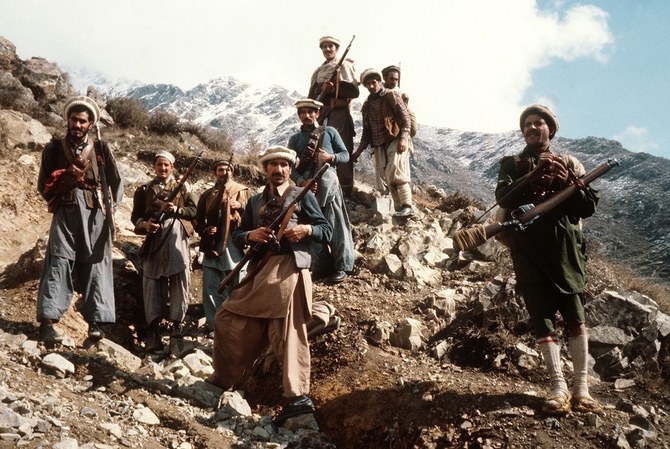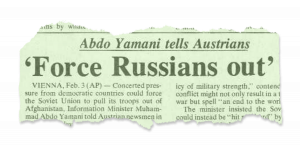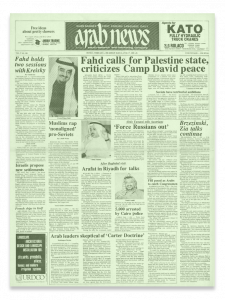- ARAB NEWS
- 30 Jun 2025

Rahimullah Yusufzai
The long conflict between the Cold War superpowers turned the country into a terrorist breeding ground
Summary
On Dec. 24 1979, the Soviet Union invaded Afghanistan following the overthrow and assassination of Nur Muhammad Taraki, the man installed by Moscow the year before as leader of its puppet regime in Kabul.
It was the beginning of an ultimately pointless bloody conflict with the guerrilla forces of the mujahideen that would rage for nine years, claiming the lives of 15,000 Soviet troops and more than a million Afghans, and ending in Moscow’s humiliating withdrawal from the country
The conflict, which became a proxy war between the Soviets and US, had dramatic geopolitical consequences. Arguably, it hastened the breakup of the Soviet Union, which collapsed in 1991. It also created a breeding ground for terrorism, leading to the rise of Osama bin Laden, who fought alongside the mujahideen.
PESHAWAR: Military intervention fueled the long conflict between the Cold War foes, the Soviet Union and the US, which backed rival Afghan sides. For the next nine years, the Red Army fought a losing war against Afghan mujahideen fighters supported by Afghanistan’s neighbors, Iran and Pakistan, Western countries, China and most of the Arab world.
Soviet forces withdrew by Feb. 15, 1989 under the terms of the Geneva Accords. Since Moscow was unable to provide the critical military and economic assistance that had sustained the communist regime in power, President Mohammad Najibullah was forced to quit in April 1992 and the mujahideen captured power.
However, the mujahideen’s failure to restore peace and stability due to their infighting offered the Taliban a chance to seize power. Though foreign fighters, including Arabs such as Al-Qaeda founder Osama bin Laden, had come to Afghanistan to take part in the earlier Afghan jihad against the Soviet forces, the Taliban regime allowed them to stay for ideological reasons.
The Soviet invasion was aimed primarily at propping up the communist regime weakened by infighting between the Khalq and Parcham factions of the People’s Democratic Party of Afghanistan and preventing the US from gaining influence in its neighborhood. The move alarmed neighboring countries, particularly Pakistan, which feared it would be invaded next since the Soviet Union could attempt to intervene in its Balochistan province and reach the warm waters of the Arabian Sea. Meanwhile, Iran, which was seeking to consolidate its February 1979 Islamic Revolution, was apprehensive about Soviet intentions due to past hostility in their relations.

Concerted pressure from democratic countries could force the Soviet Union to pull its troops out of Afghanistan, Information Minister Muhammad Abdo Yamani told Austrian newsmen in Riyadh on Sunday.
From a wire story on the front page of Arab News, Feb. 4, 1980
In the wider Middle East, the Soviet invasion caused uncertainty as Arab countries traditionally close to the US tried to figure out Moscow’s next move. This was the first time the Soviet Union had invaded a country outside the European bloc and signalled a new aggressive trend of Soviet expansionism. There were also worries the presence of Soviet forces in Afghanistan could embolden communist and radical elements in the region.
Except for the pro-Soviet radical Arab states, such as South Yemen, Syria, Algeria and Libya, as well as Palestine Liberation Organization, most countries in the Middle East sided with the US. Saudi Arabia and Egypt spearheaded support for the Afghan mujahideen, breaching their relationship with the Soviet Union for many years. Not until 1992 was Riyadh finally able to restore diplomatic relations with Moscow.
Afghan president Mohammad Daud Khan is killed in a Soviet-backed military coup that installs a modernizing communist government, triggering an Islamic insurgency.

Coup-leader and Afghan president Nur Muhammad Taraki signs a friendship treaty with the Soviet Union.
Taraki is deposed by a rival communist faction led by former ally Hafizullah Amin. Taraki is murdered the following month on Amin’s orders.

Moscow, fearful that Amin is in talks with the US, sends troops into Afghanistan.
Russian special forces storm the presidential palace in Kabul, killing Amin.
Soviets install Babrak Karmal, the exiled leader of a faction of the Marxist People’s Democratic Party of Afghanistan, as head of government.

Soviet Union pulls out the last of its troops after nine years of war.
Saudi Arabia restores diplomatic relations with Moscow.
The communist flag is lowered for the last time over the Kremlin as Soviet president Mikhail Gorbachev resigns and hands power to Boris Yeltsin, the first leader of the newly formed democratic Russian state.
The Soviet invasion also had other repercussions. As the Cold War intensified, more countries drifted toward the two blocs. Several Middle Eastern countries were among 65 nations that joined the US-led boycott of the 1980 Moscow Olympics. Diplomatic relations were broken and trade relations suffered. It took years to repair the damage and restore the relationship to near normalcy.
For Middle East nations, a worrying development was the radicalization of citizens inspired by the call for jihad in Afghanistan.
In 1979, Sheikh Abdullah Azzam, the Palestinian Islamist teacher, played an instrumental role in issuing a fatwa (edict), along with several well-known Muslim scholars, declaring jihad the individual obligation of every Muslim. This was a departure from the established Islamic law that made it the prerogative of the Muslim state and the ruler.
The fatwa prompted many Arabs, including those living comfortably in the West, to travel to Pakistan en route to Afghanistan to join the war against the Soviet forces. Among them was the billionaire Bin Laden, who not only joined the fight, but also devoted his considerable wealth to funding the mujahideen.
For Middle East nations, a worrying development was the radicalization of citizens inspired by the call for jihad in Afghanistan.
Rahimullah Yusufzai Peshawar
In time, the term Afghan-Arabs was coined to describe the mostly Arab veterans of the war in Afghanistan. Those who returned home after the Soviet forces’ pullout or at other times tried to recruit and organize others to wage war against governments in their native states.
Afghan-Arab fighters had their biggest impact in Algeria, where Djafar Al-Afghani led an armed campaign, and in Egypt, where Ayman Al-Zawahiri and Mohammad Showky Al-Islambouli inspired violent attacks against the government.

Abu Musab Al-Zarqawi and other militants who heralded the so-called Islamic State, or Daesh, also trained and fought in Afghanistan. Many war veterans headed to Bosnia-Herzegovina to fight in support of Muslims against the Serbs and Croats. All these insurrections eventually collapsed, but not before causing significant damage in terms of life and property, and forcing targeted states to adopt tough coercive measures that at times invited criticism.
The defeat of the Soviet Union in Afghanistan and its subsequent breakup in 1991 reinforced the perception among jihadists that if one superpower could be humbled, so could others. It was this belief that encouraged militant fighters to take on the US and its allies after the coalition invaded Taliban-ruled Afghanistan in October 2001 to avenge the Al-Qaeda-directed 9/11 attacks.